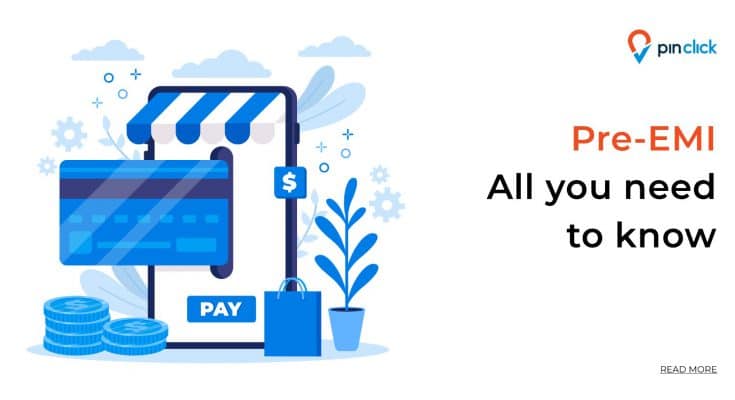The borrower starts paying the interest component of the loan amount disbursed by the lender before starting the actual EMI (Equated Monthly Installments). This is known as pre-EMI and is usually applicable in the home loan or property loan segment where the amount is disbursed in installments and not the entire amount all at once. This is a scheme by which the bank recovers the interest part of the home loan during the construction of the property. After receiving possession of the property, the borrower starts paying the actual EMI. In such cases, the borrower would have to pay the interest component of the loan amount disbursed until the start of the loan tenure. The borrower would have to pay this pre-EMI until such a time that the whole loan amount is disbursed and the EMI tenure begins.
- The pre-EMI is calculated on a daily basis of the amount disbursed by the lender, along with the interest rate applicable for such a loan. In such a case, the borrower can start paying the pre-EMI until the actual loan amount is disbursed and the EMI tenure begins.
- However, the amount of the pre-EMI is calculated on the loan amount disbursed, the applicable interest rates, and the time gap between the disbursal of the loan amount and the actual start of the EMI.
- The amount of the pre-EMI interest is usually lower than the EMI payments, as the pre-EMI interest is calculated only on the disbursed loan amount.
- In fact, the pre-EMI does not affect your credit score and it offers no Tax Benefits.
Two of the major advantages of pre-EMI include lower EMI during the construction phase of any property one needs to pay the pre-EMI only on the disbursed loan amount. Secondly, it offers a reduced financial burden for those who are renting a home but want to buy a house. This scheme allows them to only pay interest on the home loan until their property is ready.
The pre-EMI scheme though provides financial relief to the borrower and also has some risks involved in it. Some of the risks include construction delays and stalled projects. Sometimes, delays in construction are almost inevitable in the real estate business, and in such a case, the borrower ends up paying more interest than the calculated amount if the construction is not completed within a stipulated time. Therefore, one needs to be sure of the construction and the reputation of the builder before opting for a pre-EMI in-home loan.




